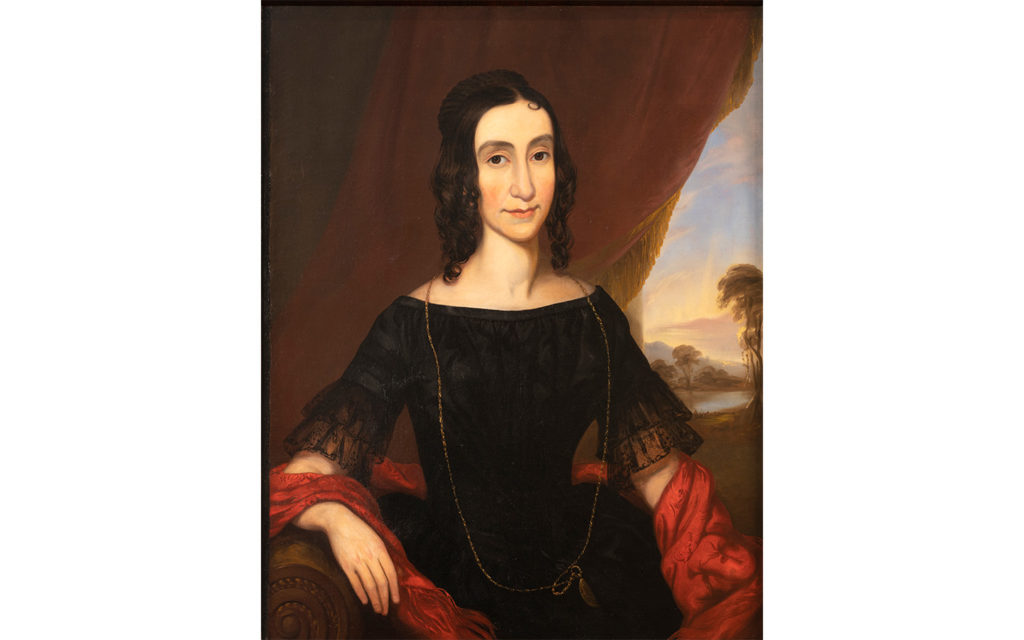What is it?
Artist
George J. Robertson (Edinburgh 1810–1894 Rockford, Illinois)
Title
Henrietta Maria Kilbourn
Year
1848
Medium
Oil on canvas
Dimensions
33 ¾ x 26 ¾ in.
Credit line
Gifted 2011, Charles Evans Kilbourne, III
About the Work
About
In 1848 when this portrait was painted, Henrietta Maria Kilbourn (née Karrick; 1810–1887) had been married ten years to Byron Kilbourn (1801–1870), whose eponymous Kilbourntown (1837) would become the City of Milwaukee in 1846. Fiercely competitive and entrepreneurial, Kilbourn was a founding father of the State of Wisconsin in 1848, a railroad executive, and a politician; he served two non-consecutive terms as mayor in Milwaukee.
Henrietta Kilbourn had had her portrait painted just one year earlier by Bernard Durward. Physically, she is little changed in this likeness by another Scot, George J. Robertson, yet the affect is very different. The sitter is erect and centered; her radiant head and neck form the apex of a solid triangle as she gazes calmly out at the viewer. A heavy red velvet curtain trimmed with gold fringe is drawn aside to let in light and reveal an idyllic vista. From the black silk dress with soft cascading sleeves of black lace that is subtly completed by a shimmering red silk shawl casually hanging about her waist and modestly covering her forearms, she is a model of poise and understated elegance. A gold watch rests on her lap, its long chain creating a large open oval that balances the boat-shaped neckline of her dress. The portrait is a beautifully crafted statement about wealth and social standing.
While Robertson like Durward was an itinerant painter from Scotland, he was by no means self-taught. Before immigrating to the United States in 1842, he had studied at the Royal Academy of Arts in London. When he arrived in Milwaukee in 1846, he shared a studio with Durward. The circumstances surrounding the relationship of the two portraits is not known, though perhaps the second one came about as an opportunity to effect an “upgrade” in terms of the tone of sophistication and social aspiration. In any case, Robertson traveled on once again, settling sometime in the mid-1850s in Rockford, Illinois, where he practiced his art successfully for the remainder of his life.

